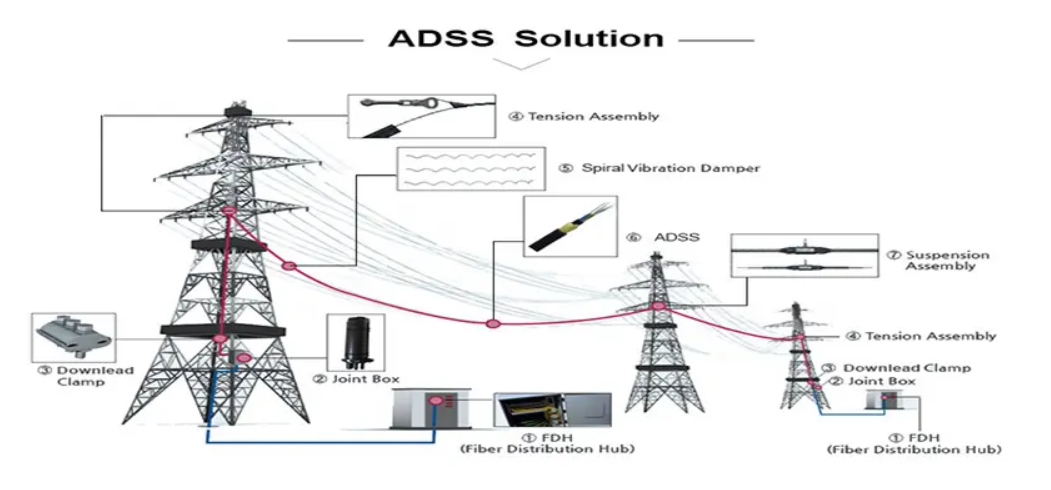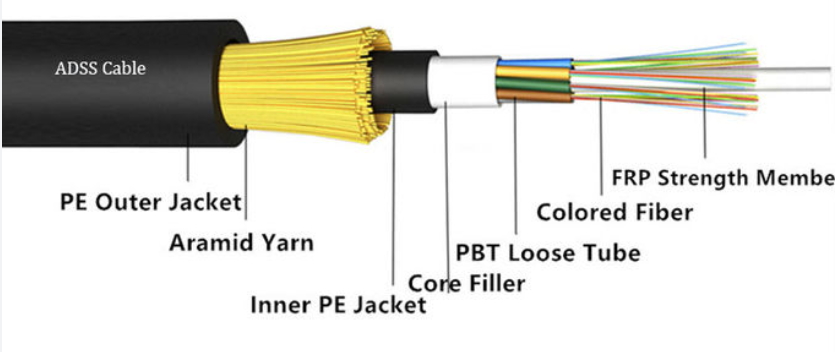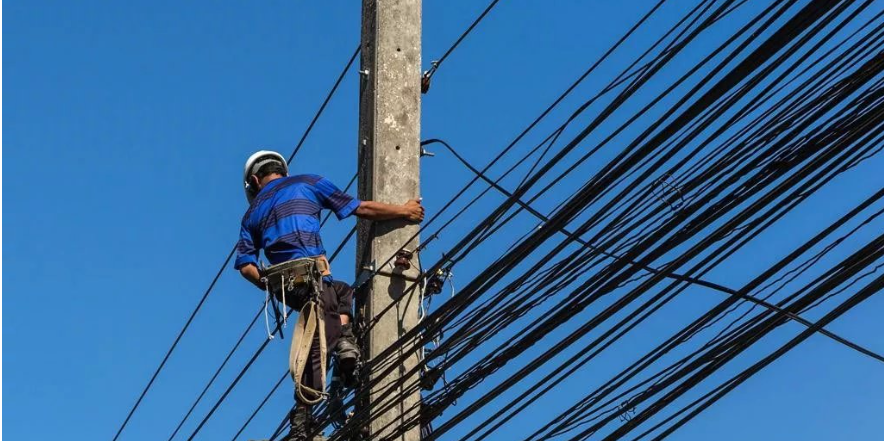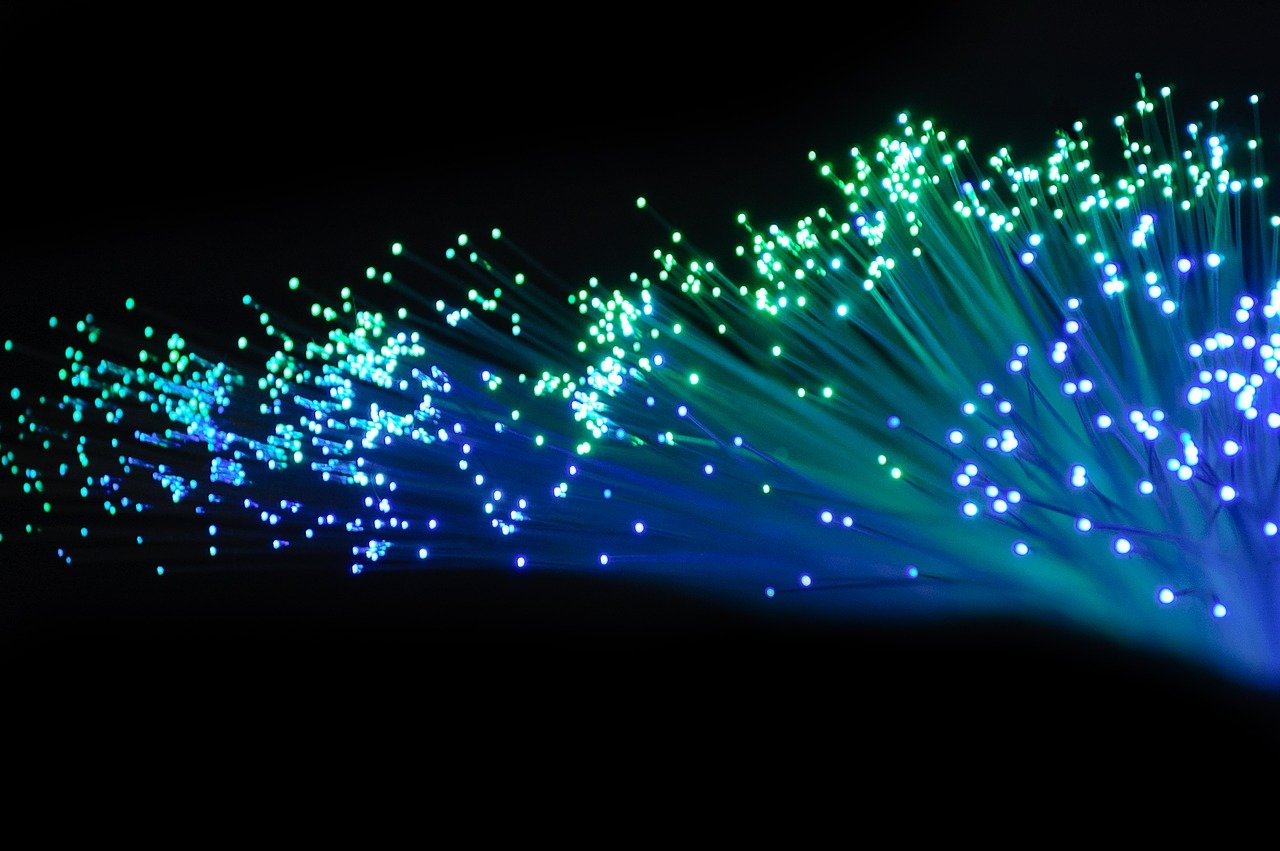Benefits of ADSS Fiber Optic Cables for Overhead Transmission Lines

Introduction
ADSS (All-Dielectric Self-Supporting) fiber optic cables have revolutionized the way overhead transmission lines are designed and operated. These cables, made of non-conductive materials, offer numerous advantages over traditional metallic cables. This blog post aims to provide professionals in the telecommunications and power industries, engineers, and technicians with a comprehensive understanding of the benefits, installation process, and advancements of ADSS cables.
By exploring the benefits of ADSS fiber optic cables for overhead transmission lines, readers will gain insights into improved reliability and higher data transmission capacity. Additionally, we will delve into the installation process and considerations involved in deploying ADSS cables effectively. Lastly, we will discuss the latest advancements in ADSS technology and explore its future prospects.
Understanding these aspects is crucial for professionals working in the industry as it enables them to make informed decisions regarding infrastructure development and maintenance. Let's dive into the world of ADSS fiber optic cables and discover their immense potential for enhancing overhead transmission line networks.
Benefits of ADSS Fiber Optic Cables
ADSS fiber optic cables offer a range of benefits that make them an ideal choice for overhead transmission lines. Let's explore two key advantages in detail:
Improved Reliability
One of the significant benefits of ADSS fiber optic cables is their improved reliability compared to traditional metallic cables. These cables are designed to withstand harsh environmental conditions and provide uninterrupted service. By using non-conductive materials, ADSS cables eliminate the risk of electrical conductivity issues.
Reduced downtime and maintenance costs are notable advantages of ADSS fiber optic cables. Unlike metallic cables, which require regular maintenance and inspections, ADSS cables have a longer lifespan and require minimal upkeep. This translates into cost savings for network operators and ensures consistent performance over an extended period.
Furthermore, ADSS cables exhibit enhanced resistance to lightning strikes and other electrical interferences. The dielectric nature of these cables prevents power surges from affecting data transmission, minimizing disruptions caused by external factors.
Higher Data Transmission Capacity
In today's digital age, the demand for high-speed internet and multimedia applications continues to grow rapidly. ADSS fiber optic cables excel in meeting this demand by providing higher data transmission capacity compared to traditional metallic counterparts.
These cables can handle large amounts of data with ease, enabling seamless communication between various endpoints along the transmission line network. Whether it's streaming high-definition videos or transferring massive amounts of data, ADSS cables ensure reliable and efficient transmission.
Moreover, the ability to support high-speed internet connections is crucial in modern telecommunications networks. With ADSS fiber optic cables, network operators can deliver faster internet speeds to end-users without compromising on signal quality or reliability.
In summary, the improved reliability and higher data transmission capacity offered by ADSS fiber optic cables make them an excellent choice for overhead transmission lines. These benefits contribute to enhanced network performance while reducing maintenance costs and ensuring uninterrupted service delivery.

Installation Process and Considerations
Proper installation of ADSS fiber optic cables is crucial to ensure optimal performance and longevity. Let's explore the pre-installation planning and installation steps involved in deploying these cables on overhead transmission lines.
Pre-installation Planning
Before installing ADSS fiber optic cables, a thorough site survey and route selection process should be conducted. This involves assessing the terrain, identifying potential obstacles, and determining the most suitable path for the cable installation. Factors such as existing infrastructure, environmental conditions, and accessibility need to be taken into account during this phase.
Another important consideration is determining the cable length and tension requirements. Accurate measurements are essential to avoid excessive tension or sagging of the cable, which can impact its performance. Calculating the appropriate tension ensures that the cable remains properly supported along its entire length.
Installation Steps
The installation process of ADSS fiber optic cables typically involves two main steps: pole attachment and cable lashing, followed by proper grounding and bonding techniques.
Pole attachment refers to securing the cable to support structures such as utility poles or towers. Specialized hardware, such as brackets or clamps, is used to ensure a secure connection while maintaining proper cable tension. Care must be taken during this step to prevent damage to the cable's outer sheath or optical fibers.
After pole attachment, cable lashing is performed to further secure the ADSS cable along its route. Lashing involves using specialized equipment like lashers or spiral wraps to fasten the cable at regular intervals along the support structure. This helps distribute any external forces evenly across the cable's length while maintaining proper alignment.
Proper grounding and bonding techniques are essential for ensuring electrical safety and minimizing signal interference. Grounding systems help dissipate any electrical charges that may accumulate on the cables due to lightning strikes or other sources of electrical energy. Bonding ensures consistent electrical potential between different metallic components within the system, reducing potential differences that could affect signal quality.
By following these installation processes and considerations, network operators can ensure the successful deployment of ADSS fiber optic cables on overhead transmission lines. Proper planning and execution contribute to the long-term reliability and performance of the cable network.

Advancements in ADSS Technology
ADSS fiber optic cables have undergone significant advancements in technology, resulting in improved performance and ease of installation. Let's explore two key advancements in ADSS technology:
Lightweight and Compact Design
One notable advancement in ADSS technology is the development of lightweight and compact cable designs. These cables are designed to be lighter than traditional metallic cables, reducing strain on support structures such as utility poles or towers. The reduced weight not only minimizes the risk of structural damage but also simplifies the installation process.
The compact design of ADSS cables allows for efficient use of space along the transmission line. With their smaller diameter, these cables can be installed alongside existing infrastructure without requiring extensive modifications. This makes them an ideal choice for retrofitting existing overhead transmission lines with fiber optic capabilities.
Furthermore, the lightweight and compact design of ADSS cables also contribute to easier maintenance. Technicians can handle and maneuver these cables with greater ease, reducing the time and effort required for routine inspections or repairs.
Improved Fiber Optic Performance
Advancements in ADSS technology have led to improved fiber optic performance, enabling higher bandwidths, faster data transfer rates, and enhanced signal quality and reliability. These improvements are crucial for meeting the increasing demand for high-speed internet connections and supporting advanced communication systems.
ADSS fiber optic cables now offer higher bandwidth capacity, allowing for seamless transmission of large amounts of data over long distances. This capability is essential for applications such as video streaming, cloud computing, and other data-intensive tasks.
Moreover, the advancements in fiber optic performance have resulted in faster data transfer rates. With increased speeds, ADSS cables enable quicker downloads/uploads and reduce latency during real-time communication or online gaming.
Enhanced signal quality and reliability are also key benefits of improved fiber optic performance. ADSS cables minimize signal loss over long distances while maintaining consistent signal strength throughout the network. This ensures reliable communication without interruptions or degradation in quality.
In summary, advancements in ADSS technology have led to lightweight and compact cable designs that reduce strain on support structures and simplify installation and maintenance processes. Additionally, improved fiber optic performance enables higher bandwidths, faster data transfer rates, and enhanced signal quality and reliability. These advancements contribute to the overall efficiency and effectiveness of ADSS fiber optic cables for overhead transmission lines.
Future Prospects of ADSS Fiber Optic Cables
ADSS fiber optic cables hold immense potential for future applications, particularly in the areas of smart grids and telecommunication networks. Let's explore the future prospects of ADSS cables in these domains:
Integration with Smart Grids
Smart grids are advanced electrical systems that enable efficient power distribution, monitoring, and management. ADSS fiber optic cables play a crucial role in integrating communication capabilities into smart grid infrastructure.
By incorporating ADSS cables into smart grid networks, utilities can establish reliable and high-speed communication channels between various components. This enables real-time monitoring of power generation, transmission, and consumption, facilitating efficient energy management and reducing downtime.
Moreover, ADSS cables support advanced grid management systems that rely on accurate data collection and analysis. These cables provide the necessary bandwidth to transmit large volumes of data generated by sensors and devices within the smart grid network. The integration of ADSS technology enhances the overall performance and reliability of smart grids, leading to improved energy efficiency and cost savings.
Expansion of Telecommunication Networks
The demand for high-speed internet access continues to grow rapidly worldwide. ADSS fiber optic cables are poised to play a significant role in expanding telecommunication networks to meet this demand.
ADSS cables enable the deployment of high-capacity broadband connections in both urban areas and remote locations. They offer reliable transmission over long distances without signal degradation or interference from external factors. This makes them ideal for extending telecommunication networks to underserved or hard-to-reach areas.
Furthermore, ADSS technology supports reliable communication in remote regions where traditional infrastructure is challenging to implement. By leveraging ADSS fiber optic cables, network operators can bridge the digital divide by providing fast and stable internet connections to previously inaccessible areas.
In summary, the future prospects of ADSS fiber optic cables include their integration with smart grids for efficient power distribution and monitoring. Additionally, these cables will contribute to the expansion of telecommunication networks, meeting the growing demand for high-speed internet access and enabling reliable communication in remote areas. The versatility and capabilities of ADSS cables position them as a key technology for future infrastructure development.
Conclusion
In conclusion, ADSS fiber optic cables bring significant advantages to overhead transmission lines. Their improved reliability, higher data transmission capacity, and resistance to electrical interferences make them a preferred choice for professionals in the telecommunications and power industries. Understanding the installation process and advancements in ADSS technology is crucial for ensuring successful deployment and maintenance of these cables.
Looking ahead, the future prospects of ADSS fiber optic cables are promising. They will continue to integrate with smart grids, enabling efficient power distribution and supporting advanced grid management systems. Additionally, ADSS technology will contribute to the expansion of telecommunication networks, meeting the growing demand for high-speed internet access and reliable communication in remote areas.
As technology advances, we can expect further integration and expansion of ADSS technology, driving innovation in the telecommunications and power sectors. Stay informed about these developments to harness the full potential of ADSS fiber optic cables for overhead transmission lines.
See Also
Harnessing the Potential of FastConnect: Features and Advantages
Discovering the Advantages of IP67 Waterproof FTTX Solutions
Unveiling the Advantages of Field Assembly Connectors
Simplifying Cable Solutions with Preconn: An Efficient On-Site Termination Guide
Sturdy and Trustworthy 2 in 1 Harden Optical Connector Cable Assemblies
About US
Follow Us
ANETFIBER is a factory established in 2013, growing, producing a complete solution of products for the deployment of fiber optic cable by FTTX and FTTH technologies in outdoor, indoor subway applications. ANETFIBER's factory has a complete infrastructure of facilities to produce fiber optic cable components for the construction of telecommunication networks.
Address
406 Tonggangda New Energy Car Park, Tangxiayong Industrial Rd, Yanluo Street, Bao'an District, Shenzhen 518105
Contacts
jeanette@anetfiber.com
WhatsApp: +86 199 2658 5616


